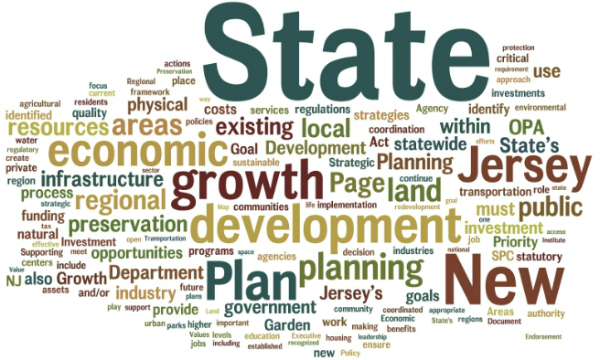New Jersey Future Blog
Suburbs Still Growing … But So Are The Cities
May 4th, 2009 by Tim Evans
- Cumberland County was New Jersey’s fastest-growing county between 2007 and 2008, with a 0.92 percent population increase, nearly triple the statewide growth rate (0.34 percent) for the year.
- Two primarily suburban counties, Somerset and Gloucester, took second and third place, respectively, both exceeding 0.8 percent population growth.
- Outpacing even the fastest-growing New Jersey county was Staten Island (Richmond County), N.Y., whose population grew by 0.94 percent. Brooklyn, Queens and Manhattan also grew faster than all but five New Jersey counties. These relationships did not hold earlier in the decade, indicating that the resurgence of New York City population growth relative to New Jersey is a recent phenomenon.
Demographics, Economy Seen as Factors Influencing Growth Patterns
Demographers, planners and homebuilders have observed in recent years that several demographic trends may be converging and conspiring to dampen suburban sprawl while fueling the rebirth of cities and older, close-in suburbs. (See, for example, the 2004 Rutgers Regional Report The Beginning of the End of Sprawl? and the U.S. Environmental Protection Agency report Residential Construction Trends in America’s Metropolitan Regions from earlier this year.)
The factors typically cited in these reports include aging Baby Boomers seeking to downsize and relocate to more walkable environments; more single people delaying or forgoing marriage and seeking urban amenities in the meantime; and more couples choosing not to have children, thus inoculating themselves against the usual deterrent effect of low-quality urban schools.
The subprime lending crisis, which took a heavy toll on new developments in outlying locations, and 2008’s high gasoline prices, which suddenly called into question the wisdom of trading a longer commute and higher transportation costs for a bigger or cheaper house, helped reinforce these trends. (See “The Next Slum?” by Christopher Leinberger in the March 2008 issue of The Atlantic for more.)
The Census Bureau’s recently released county population estimates for 2008 reinforce the observation that some urban areas may indeed be rebounding — but they also serve as a reminder that the problem of suburban sprawl hasn’t gone away.
Hudson, Union and Passaic counties, in New Jersey’s urbanized northeastern core, all posted modest population gains between 2007 and 2008, after experiencing losses in each of the previous three years. In the case of Union and Passaic, last year’s gains were enough to overcome earlier losses and push them into net positive territory since 2000. Essex County lost population, as it has every year since 2002, but not because of its largest city; Newark’s population has actually been growing slowly but consistently all decade. Newark is, in fact, one of only five of Essex County’s 22 municipalities that gained residents since 2000.
Results from New Jersey’s two large neighbor cities also reinforce the urban recovery theme. Over the past three years, all five of New York City’s constituent counties have roughly kept pace with New Jersey’s faster-growing counties, and all five have exceeded New Jersey’s annual statewide population growth rate every year since 2004. Philadelphia has not fared as well, having lost population every year since 2000 (and every decade since 1950), but its 2007-2008 loss of only 0.09 percent is by far its smallest annual loss of the decade and represents a significant improvement over previous years.
Despite the signs of life in urban areas, it would be premature to proclaim the end of sprawl on the suburban fringe. Not only does Gloucester County remain the fastest-growing county in the state since 2000, but its southeastern neighbor, Cumberland County, which experienced relatively stagnant growth through the 1990s and the early 2000s, grew even faster than Gloucester between 2007 and 2008. Another rural county, Salem, the only New Jersey county that lost population throughout the 1990s, has reversed course since 2002 and now exceeds its 1990 population. Outside the Philadelphia metropolitan area, suburban Somerset and Ocean continue to top the list of New Jersey’s fast-growing counties.
Demographic changes may be aiding the revival of some of New Jersey’s urban and older suburban areas. And the economic downturn may be discouraging geographic mobility, helping slow the spread of low-density suburban development. But plenty of work remains to be done in steering growth to the most appropriate places. External factors may provide a timely assist, but managing growth is still going to require good planning.
If you have any questions about this issue of Future Facts, please contact Research Director Tim Evans (timevans njfuture
njfuture org) .
org) .
















